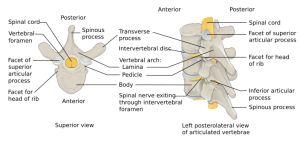Fractures (main): Difference between revisions
(Updated principles of fracture description.) |
|||
| Line 1: | Line 1: | ||
==Describing Fractures== | ==Describing Fractures== | ||
A systematic approach for the description of fractures should be used to aid in clear communication with radiologists and consulting specialists. | |||
# Laterality | |||
**Intra-articular | # Affected Bone | ||
** | # Location | ||
** | ** Intra-articular vs. extra-articular | ||
** Portion of long-bone (proximal, middle, distal) | |||
** Anatomic site (ex. supracondylar, intertrochanteric, subtrochanteric, femoral neck) | |||
**Transverse | # Open vs. Closed | ||
**Oblique | # Direction (orientation of fracture line relative to long-axis) | ||
**Spiral | ** Transverse | ||
**Comminuted | ** Oblique | ||
** | ** Spiral | ||
** Segmental (>2 fragments, with one segment not connected to either end) | |||
** Comminuted (>3 fragments) | |||
** Impacted | |||
**Torus / Greenstick (Peds) | **Torus / Greenstick (Peds) | ||
# Alignment | |||
** | ** Displacement (distal relative to proximal fragment) | ||
***State in terms of direct measurement (e.g. 4mm) or %width of bones (50% displacement) | ***State in terms of direct measurement (e.g. 4mm) or %width of bones (50% displacement) | ||
**Direction of | ** Angulation | ||
*Separation | *** Deviation from longitudinal axis, described in degrees and direction | ||
**Distance | *** Direction of apex of angle formed from redrawn longitudinal axes of fracture fragments | ||
*Shortening | ** Rotation | ||
**Amount by which a bone's length has been reduced (expressed in mm or cm) | *** Twisting around longitudinal axis (distal relative to proximal fragment) | ||
**May occur by impaction or by overriding | *** Described as medial or lateral rotation (towards or away from midline respectively) | ||
** Separation | |||
** | *** Distance two fragments have been pulled apart (but not offset from each other) | ||
*** | ** Shortening | ||
*** Amount by which a bone's length has been reduced (expressed in mm or cm) | |||
*** | *** May occur by impaction or by overriding | ||
** Other | |||
*** | *** Incomplete: Only one side of cortex disrupted | ||
*** Stress: Caused by repetitive low-force trauma/impact | |||
* | *** Pathologic: Caused by trivial trauma or biomechanically routine force, suggestive of abnormal bone. | ||
* | *** Fracture-Dislocation: Be careful not to describe these injuries as fractures with displacement | ||
*Fracture-Dislocation | |||
[[Salter Harris]] | |||
==Head and Neck== | ==Head and Neck== | ||
Revision as of 21:55, 10 June 2016
Describing Fractures
A systematic approach for the description of fractures should be used to aid in clear communication with radiologists and consulting specialists.
- Laterality
- Affected Bone
- Location
- Intra-articular vs. extra-articular
- Portion of long-bone (proximal, middle, distal)
- Anatomic site (ex. supracondylar, intertrochanteric, subtrochanteric, femoral neck)
- Open vs. Closed
- Direction (orientation of fracture line relative to long-axis)
- Transverse
- Oblique
- Spiral
- Segmental (>2 fragments, with one segment not connected to either end)
- Comminuted (>3 fragments)
- Impacted
- Torus / Greenstick (Peds)
- Alignment
- Displacement (distal relative to proximal fragment)
- State in terms of direct measurement (e.g. 4mm) or %width of bones (50% displacement)
- Angulation
- Deviation from longitudinal axis, described in degrees and direction
- Direction of apex of angle formed from redrawn longitudinal axes of fracture fragments
- Rotation
- Twisting around longitudinal axis (distal relative to proximal fragment)
- Described as medial or lateral rotation (towards or away from midline respectively)
- Separation
- Distance two fragments have been pulled apart (but not offset from each other)
- Shortening
- Amount by which a bone's length has been reduced (expressed in mm or cm)
- May occur by impaction or by overriding
- Other
- Incomplete: Only one side of cortex disrupted
- Stress: Caused by repetitive low-force trauma/impact
- Pathologic: Caused by trivial trauma or biomechanically routine force, suggestive of abnormal bone.
- Fracture-Dislocation: Be careful not to describe these injuries as fractures with displacement
- Displacement (distal relative to proximal fragment)
Head and Neck
Maxillofacial Trauma
- Ears
- Nose
- Oral
- Other face
- Zygomatic arch fracture
- Zygomaticomaxillary (tripod) fracture
- Related
Vertebral fractures and dislocations types
- Cervical fractures and dislocations
- Thoracic and lumbar fractures and dislocations
Upper Extremity
Humerus Fracture Types
Elbow
- Adult
- Pediatric
Forearm Fracture Types
- Distal radius fractures
- Radia ulna fracture
- Isolated radius fracture (proximal)
- Isolated ulna fracture (i.e. nightstick)
- Monteggia fracture-dislocation
- Galeazzi fracture-dislocation
- Forearm fracture (peds)
Carpal fractures
- Scaphoid fracture
- Lunate fracture
- Triquetrum fracture
- Pisiform fracture
- Trapezium fracture
- Trapezoid fracture
- Capitate fracture
- Hamate fracture
Hand and Finger Fracture Types
Torso
Chest
Abdomen
Spine
Lower Extremity
Proximal Leg
Distal Leg Fracture Types
- Tibial plateau fracture
- Tibial shaft fracture
- Pilon fracture
- Maisonneuve fracture
- Tibia fracture (peds)
- Ankle fracture
- Foot and toe fractures






